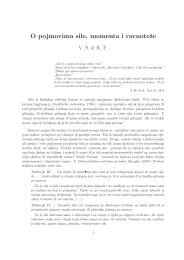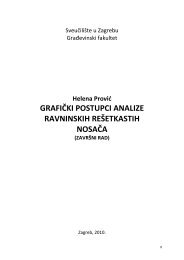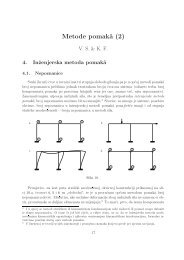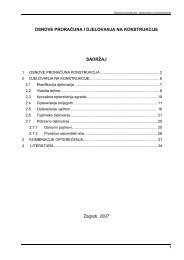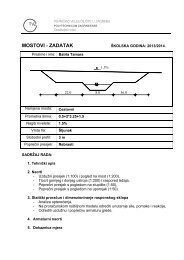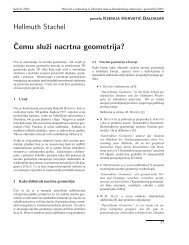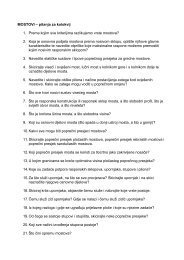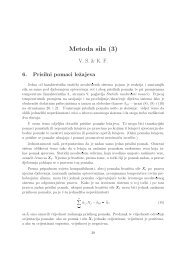On the Generalized Gergonne Point and Beyond - Forum ...
On the Generalized Gergonne Point and Beyond - Forum ...
On the Generalized Gergonne Point and Beyond - Forum ...
Create successful ePaper yourself
Turn your PDF publications into a flip-book with our unique Google optimized e-Paper software.
154 M. Hoffmann <strong>and</strong> S. Gorjanc<br />
Figure 4. Given a triangle V 1V 2V 2 <strong>and</strong> directions q i(i = 1,2, 3) <strong>the</strong>re can<br />
be two different real solutions (upper figure), two coinciding solutions (bottom<br />
right) <strong>and</strong> two imaginary solutions (bottom left). Cevians are plotted by dashed<br />
lines. The type of solutions depends on <strong>the</strong> relative position of I to <strong>the</strong> shaded<br />
conic. The three conic paths of G 12 (green), G 13 (red) <strong>and</strong> G 23 (blue) are also<br />
shown. (This figure is computed <strong>and</strong> plotted by <strong>the</strong> software Ma<strong>the</strong>matica)<br />
(iii) If <strong>the</strong> points S 1 <strong>and</strong> S 2 are <strong>the</strong> pair of imaginary points <strong>the</strong>re are no real<br />
number x for which <strong>the</strong> lines V i Q i are concurrent.<br />
□<br />
Figure 4 shows <strong>the</strong> three different possibilities mentioned in <strong>the</strong> proof. If <strong>the</strong><br />
triangle <strong>and</strong> <strong>the</strong> directions q i , i = 1,2,3, are fixed, <strong>the</strong>n <strong>the</strong> radius of <strong>the</strong> circle can<br />
be obtained by <strong>the</strong> solutions of a quadratic equation in which <strong>the</strong> only unknown<br />
is <strong>the</strong> point I. The type of <strong>the</strong> solutions depends on <strong>the</strong> discriminant, which is a<br />
quadratic function of I. This means that for every triangle <strong>and</strong> triple of directions<br />
<strong>the</strong>re exists a conic which separates <strong>the</strong> possible positions of I in <strong>the</strong> following<br />
way: if I is outside <strong>the</strong> conic (discriminant > 0) <strong>the</strong>n <strong>the</strong>re are two different real<br />
solutions, if I is on <strong>the</strong> conic (discriminant = 0) <strong>the</strong>n <strong>the</strong>re are two coinciding



